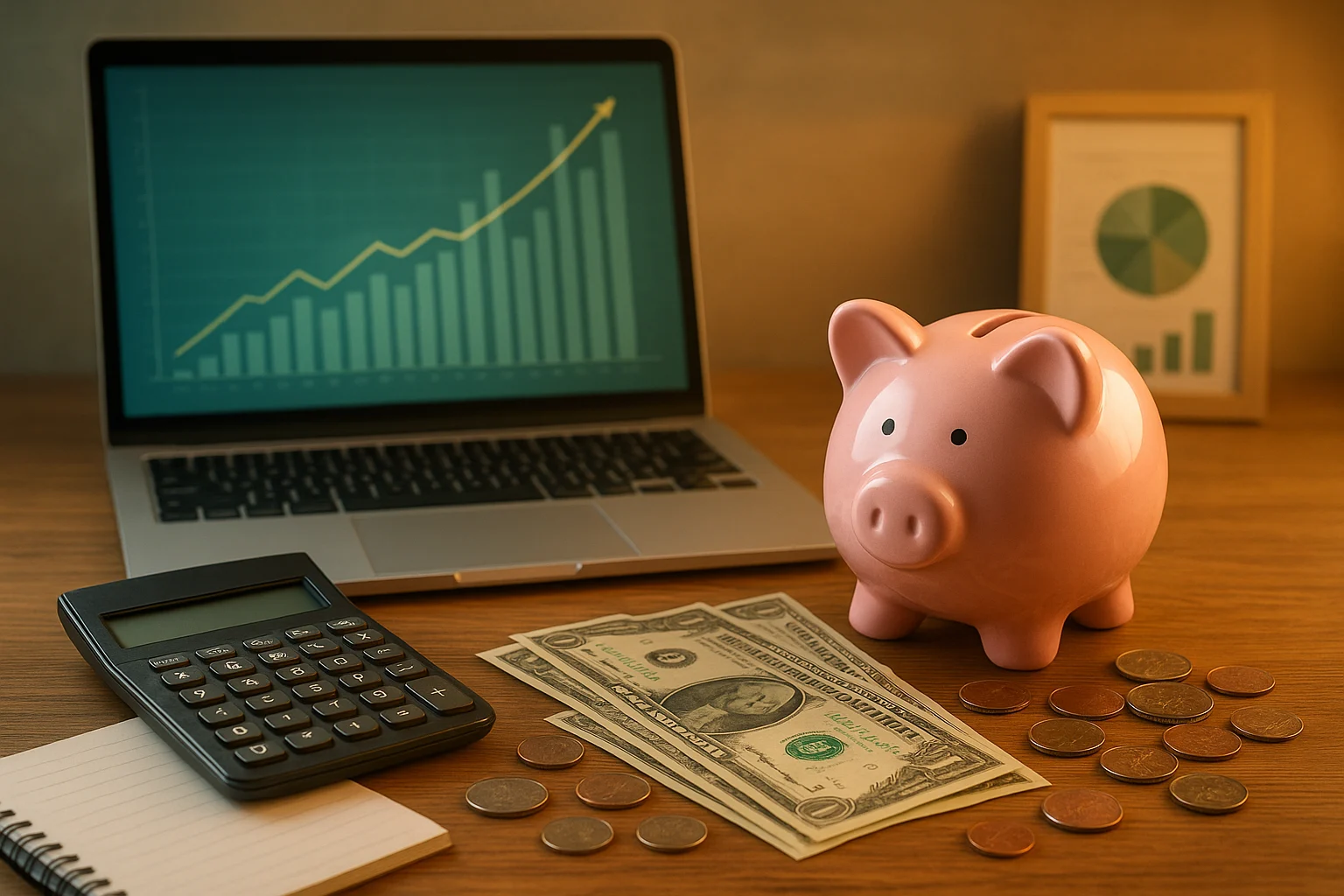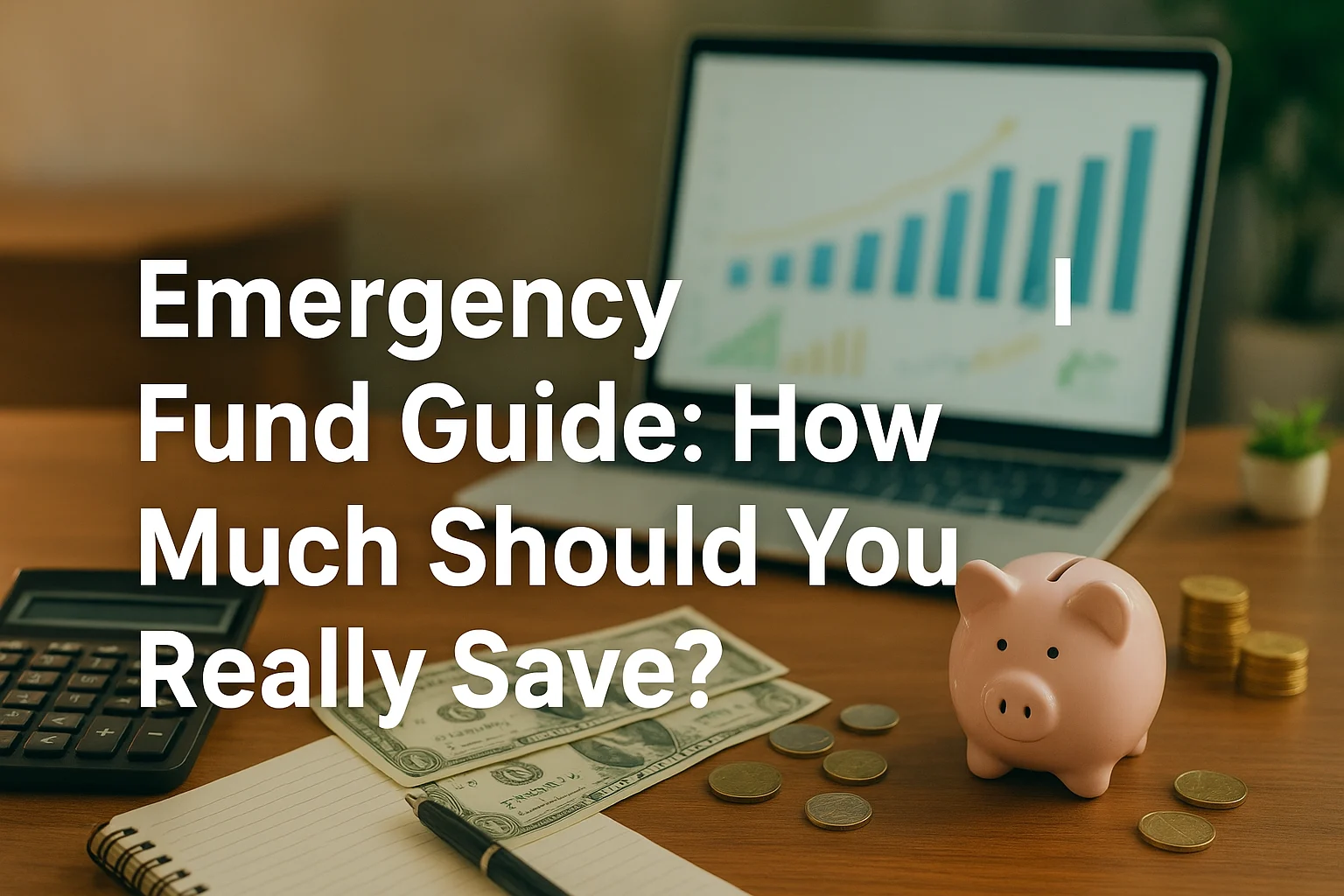Emergency expenses can arise at any time in life—like medical bills, car repairs, or a sudden job loss. At such times, if you don’t have an emergency fund, the situation can become quite urgent, forcing you to take out high-interest loans or credit card debt. Financial experts, however, say that having a solid emergency fund is always essential for everyone.
But the question is – how much should you save and how do you get started? This article will give you a step-by-step guide.
If you don’t know what an emergency fund is, simply put, an emergency fund is a separate savings account set aside solely for essential emergencies. It’s separate from your regular checking or savings account, so you can easily access it when needed. The purpose of an emergency fund is to provide financial stability and peace of mind.
This is even more important for households with housing, as healthcare costs or sudden rent increases can occur at any time.
How much should I save?
Financial experts generally recommend that you have an emergency fund equal to 3 to 6 months of living expenses. This means that if your monthly expenses are $3,000, your emergency fund should be between $9,000 and $18,000.
It’s important to note that this is just a guideline. Some people may save more or less depending on their job security, dependents, or health conditions. If you’re self-employed or have irregular income, experts recommend setting aside more than six months’ worth of funds.

💼 Emergency-Fund – Key Guidelines
- Recommended Amount: Save 3–6 months of living expenses. Example: $3,000/month → $9,000–$18,000 fund.
- Guideline Only: Amount may vary depending on job security, dependents, or health conditions.
- Self-Employed / Irregular Income: Consider saving more than 6 months’ worth of expenses.
💡 Pro Tip: Treat your emergency-fund as a safety net — it ensures financial security during unexpected situations.
Where to keep emergency funds?
Your emergency fund should be in an account that’s both safe and easily accessible. Here are some options for those who need:
- High-yield savings account
- Money market accounts
- Short-term CDs (Certificate of Deposit)
It’s important not to invest this fund in the stock market or risky investments. You may need to access the fund during periods of market volatility, and if the fund is held in stocks, it could fall.
How to build an emergency fund?
Building an emergency fund may seem daunting, but you can get started quickly by following these simple steps:
- Set a small target – Build a fund of $1,000 first. This small target is motivational.
- Automatic savings – Set up an automatic transfer from your checking account to your emergency fund account every month.
- Reduce unnecessary expenses – Cut back on dining out, subscriptions, or impulsive shopping, and put your savings into the fund.
- Extra income – If you have side income or a bonus, put a portion of it directly into the fund.
Consistency is key. Even if you only save $50 per month, regularity is the key to growing your funds.
💡 Emergency Fund – Savings Tips
- Set a Small Target: Start with $1,000 — small milestones keep you motivated.
- Automatic Savings: Set up monthly transfers from your checking account to your emergency-fund.
- Reduce Unnecessary Expenses: Cut dining out, subscriptions, or impulsive shopping and save the difference.
- Use Extra Income: Allocate side income or bonuses directly into your emergency-fund.
- Consistency is Key: Even saving $50/month regularly helps your fund grow over time.
🔑 Pro Tip: Regular small savings often outperform large irregular deposits — consistency builds financial security.
Maintaining an emergency fund
- Use only for emergencies.
- If funds are used up, replenish immediately.
- Adjust funds over time – As your monthly expenses increase, increase funds accordingly.
Also consider the impact of inflation and healthcare costs in the US. Even if your fund remains static over the long term, inflation could cause it to lose value.
Avoid Common Mistakes
- Saving less or just sticking to $500–$1,000.
- Investing funds in risky investments.
- Using funds for non-emergency expenses.
- Not adjusting funds regularly.
⚠️ Emergency Fund – Common Mistakes
- Saving Too Little: Only saving $500–$1,000 may be insufficient.
- Investing in Risky Assets: Avoid putting your emergency fund in high-risk investments.
- Using Funds for Non-Emergencies: Keep the fund strictly for real emergencies.
- Not Adjusting Regularly: Review and increase your fund periodically as expenses or circumstances change.
💡 Pro Tip: Avoid these mistakes to keep your emergency fund effective and ready when needed.
Conclusion:
An emergency fund is crucial for your financial security. It helps you in emergencies, protects you from debt, and provides peace of mind. Whether you’re a beginner or an experienced saver, now is the best time to start. Start small, be consistent, and gradually build your fund.
Remember – an emergency fund is not just money, it is a powerful tool for your financial confidence.
Also read:
🔷 Which Two Habits Are the Most Important for Building Wealth and Becoming a Millionaire?
🔷 What Are the Keys to Building Wealth Through Investments? (A Complete Guide for Smart Investors)












